Appetite for DestructionFrom the dept. of "Stupid things you've always wanted to do..." Take one retired microwave oven. Shove it in the attic. Forget about it. Clean up the attic. Rediscover the old microwave oven. Haul it down. Store it in the basement. Make a mental note of it being there. Collect junk. Sort junk. Store selected junk items in the microwave. Find time. Grab a camera. Grap a pen and notepad. Jot down a recipe for disaster. First up would be the obligatory "CD in the microwave" stunt. I knew those AOL CDs would come in handy someday... but interesting? No, not really. A little bit of fireworks, and 5 seconds later this is how the label surface looked: 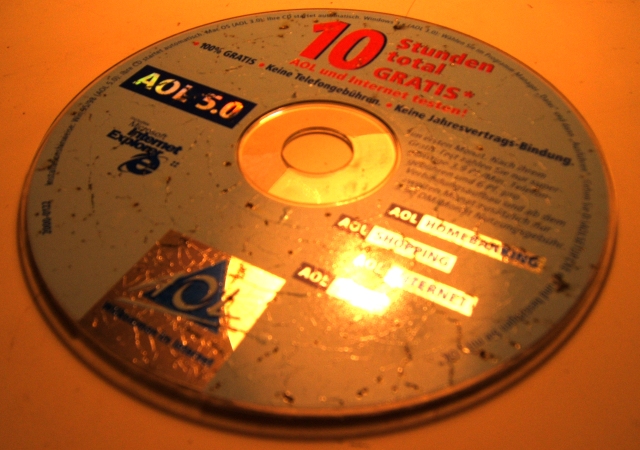
The underside was far more interesting. 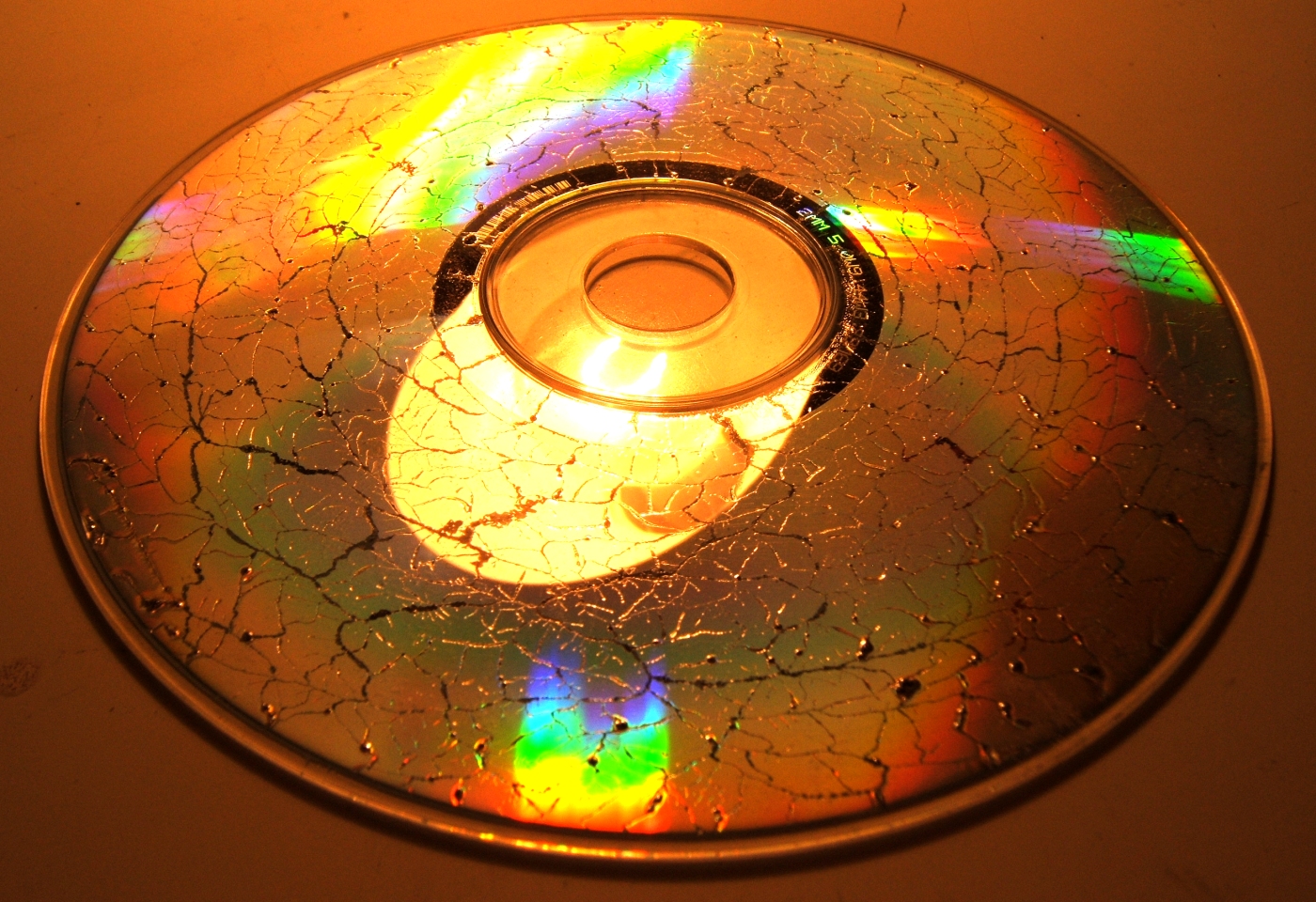
Well, that wasn't nearly as exciting as one would've thought. Some more small fireworks, a little smoke, some stink, and 20 seconds later it's wrapped snugly around the glass jar. 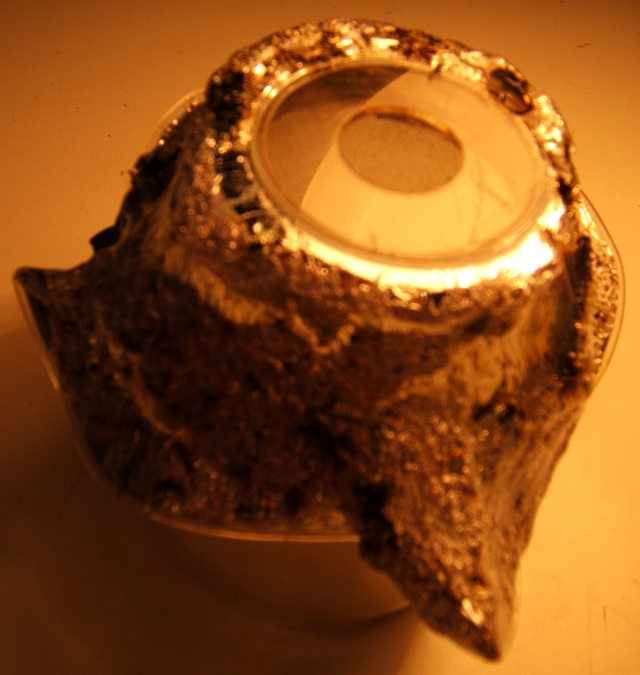
Oh, whoopee! MOAR! Nah, can't even turn up the power, the MICROMAT only outputs 500W. What about a CD-R? After 10 seconds of a far more spectacular fireworks show, this is how the CD-R looked: 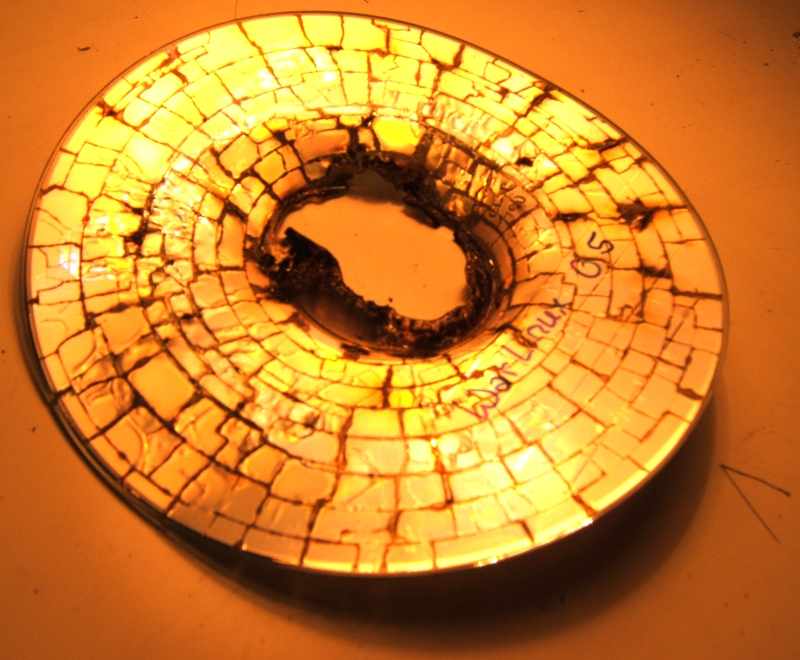
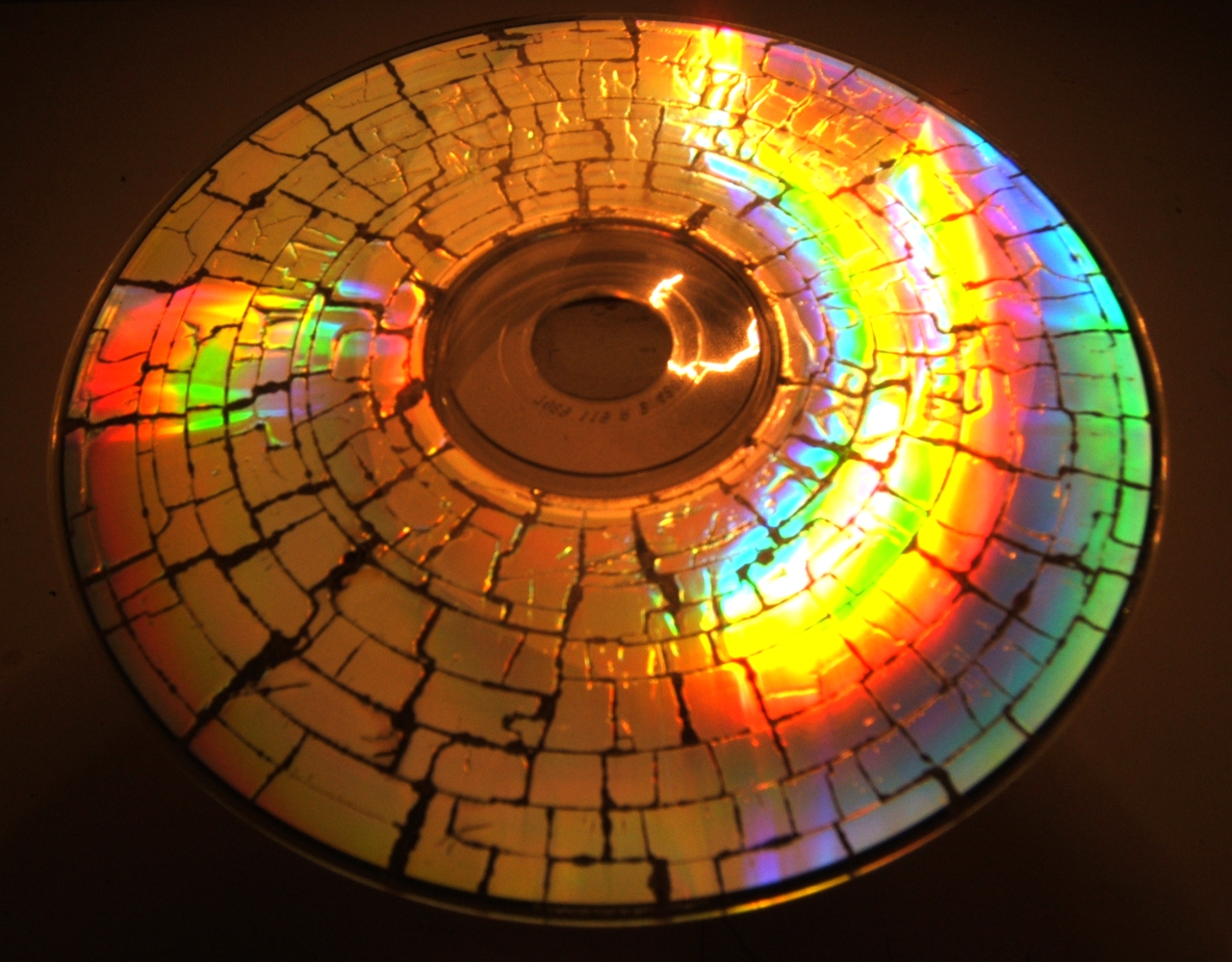
Now we're cooking! Surprisingly, compared to the pressed AOL disc, this CD-R only just began to melt and deform after about 30 seconds. It also smoked and stank a lot more. 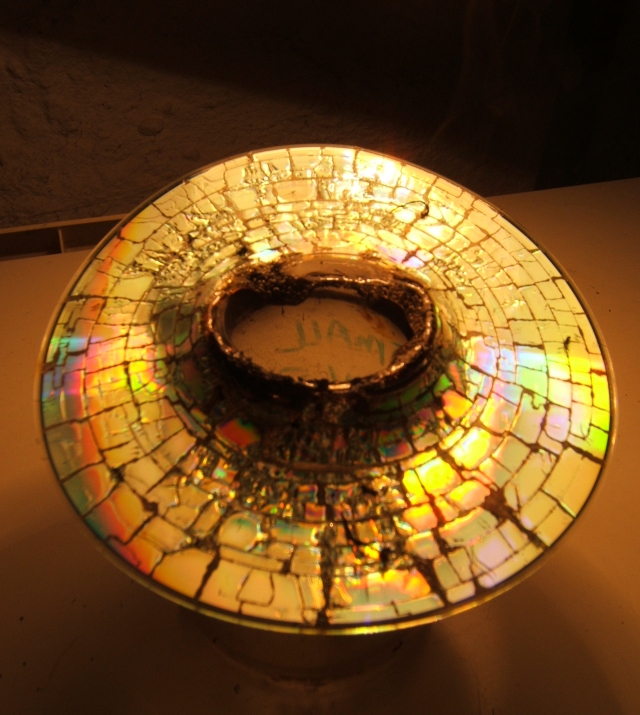
And now for something else: vinyl. Vinyl should melt, right? 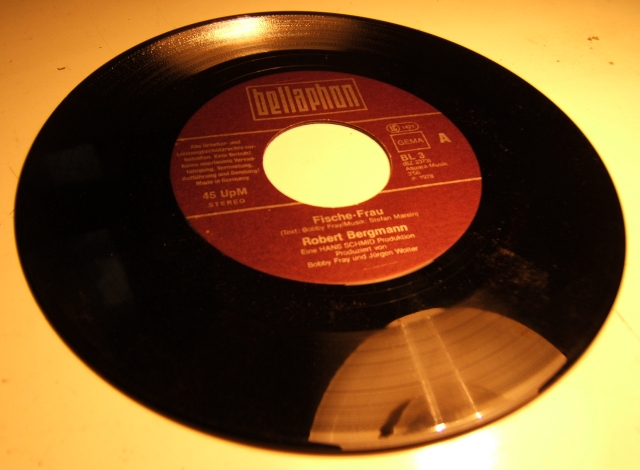
Wrong. After two minutes -- nothing. Zilch. Nada. The 45 remained even cold to the touch. Barely warped. We may need to haul out the gamma ray particle accelerator from the attic for further experiments with this material. But why restrict ourselves to flat and circular media? Let's get magnetic. 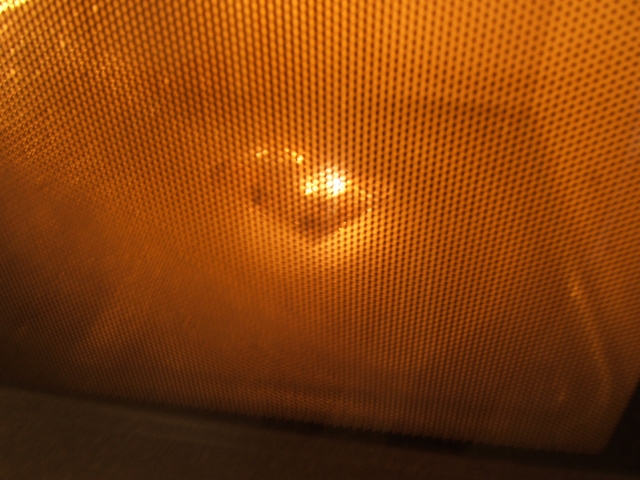
An ordinary audio cassette provides some minor fireworks (not on account of the metal screws but rather due to the oxide particles on the tape itself) for around 15 seconds before the plastic cartridge catches alight and burns along quite merrily. 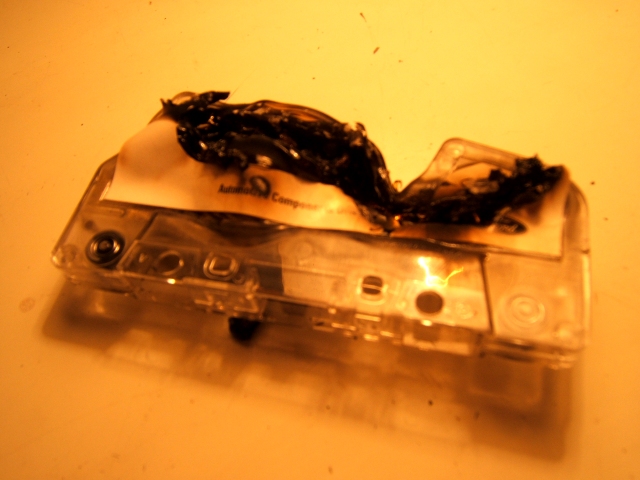
What remains is a molten, stinking blob. 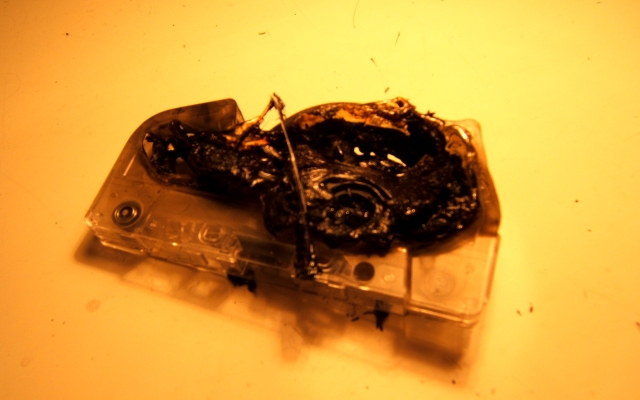
Do you remember how we were always told to store tapes inside their boxes "when not in use"? Here's why: Those boxes are tough. This tape got nuked for 20 seconds. Nothing. No fireworks, no smoke, no nothing. 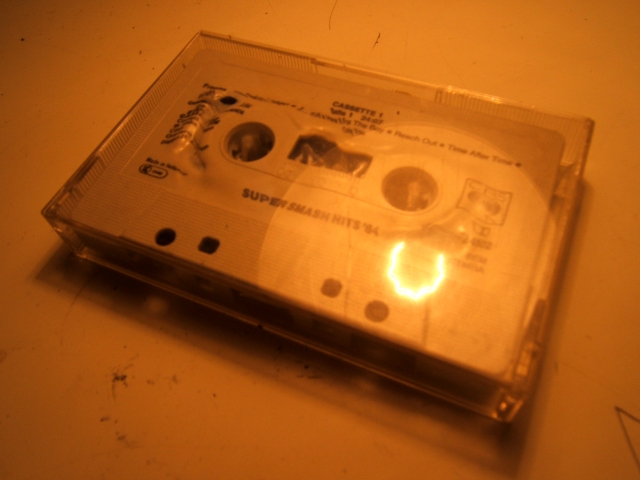
Yes, the cartridge is certainly warped (and the reels still turned) -- but not a scratch on the box itself. 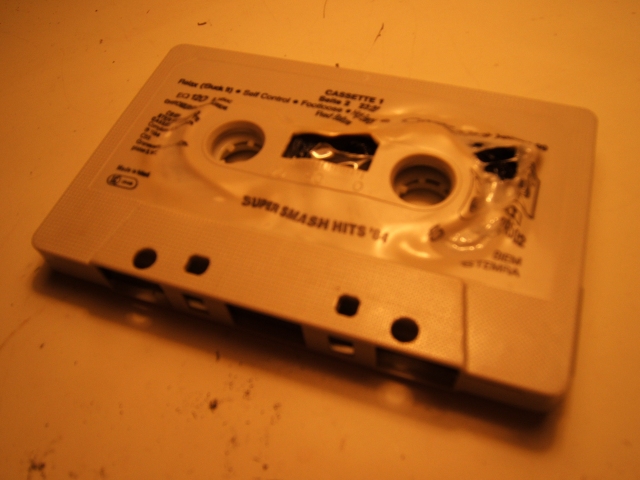
Another 30 or so seconds of radiation treatment later (during which time there were some crackling noises but hardly any sparks) smoke finally started bellowing from the exhaust of the MICROMAT but still: no fire. No flames, but enough smoke that I had to leave the room. (Note to self: this should really be done outdoors.) There can be smoke without fire, and this is what causes it: 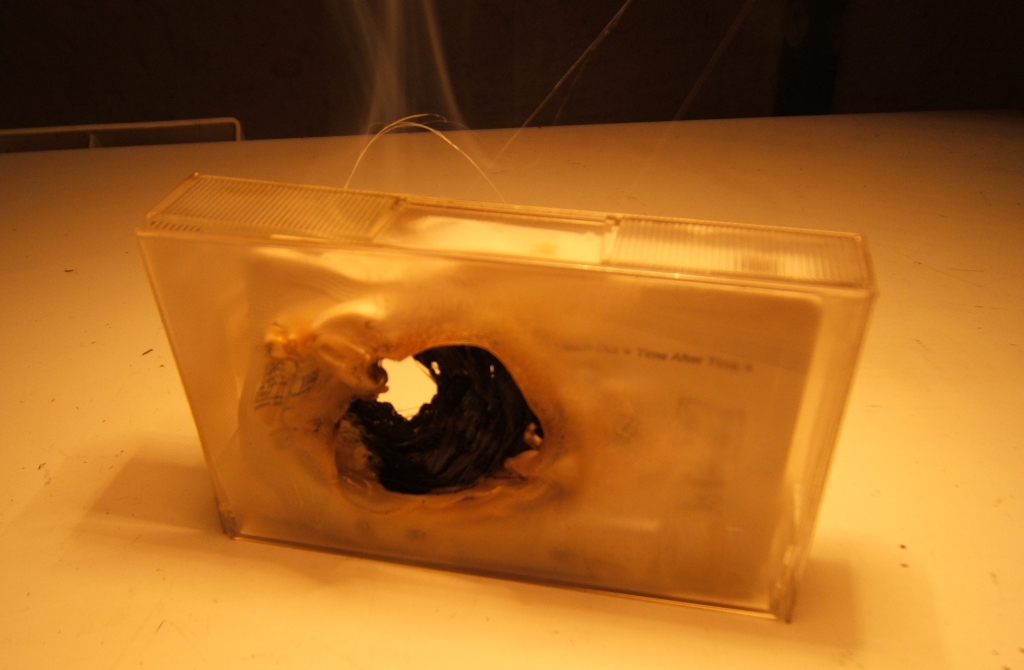
Amazingly, there's no damage to the protective box other than where the heated magnetic tape particles burnt through the cartridge. The final contestant in this round of numbskullery: electronics. A disused remote control (without batteries) was turned into a gooey mess of plastic and rubber after about 60 seconds. Boring. Entirely uneventful, were it not for the wonderful bang 20 seconds into the session -- presumably caused by a capacitor spilling its innards. 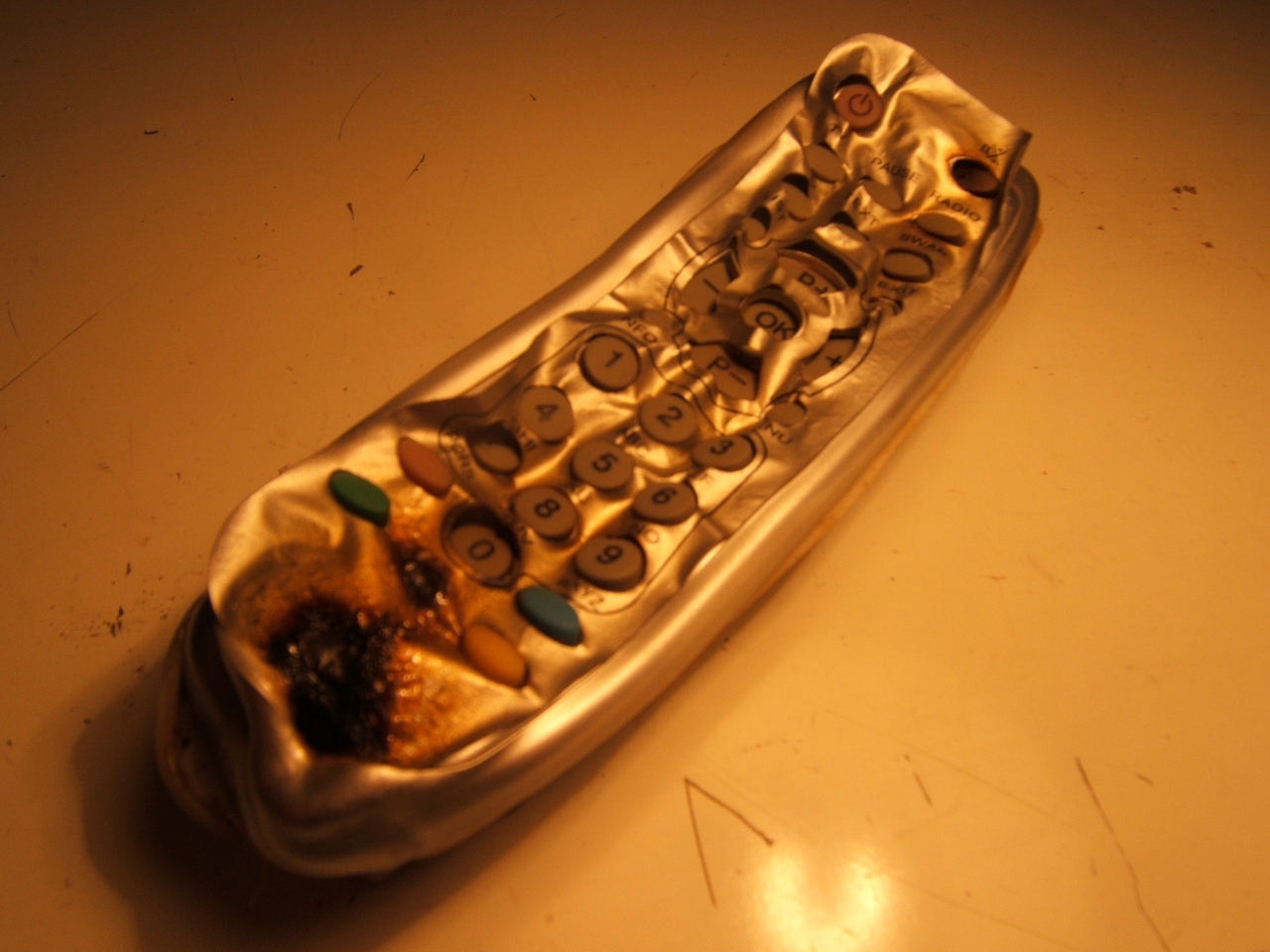
Most of the heat was developed around the metal contact points in the battery compartment. Really nothing exciting... the plastic got malformed, the circuitry got fried. 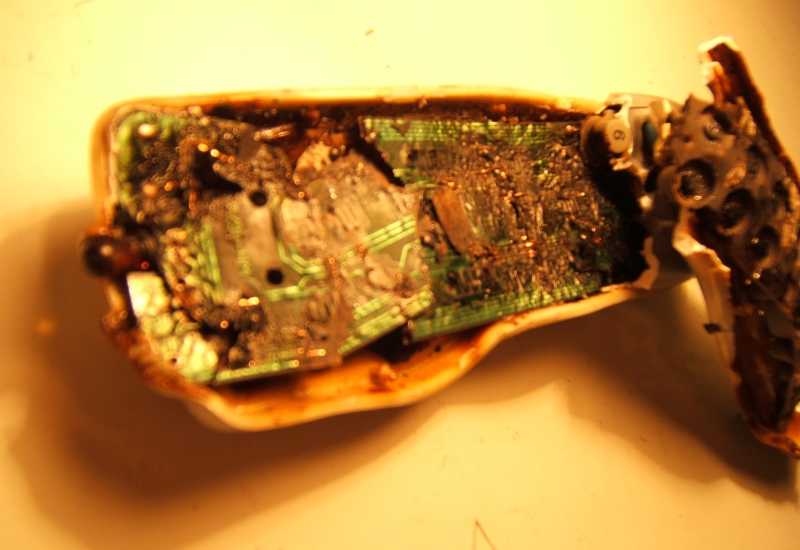
It wasn't worth the effort to nuke the other remote control. Maybe next time. Part 2: Hungry for StinkIt's October 2013. We're moving house. Now is as good a time as any to nuke the candidates that have collected in the mighty MICROMAT. We also get to find out if there's a difference in stinkage between AOL 7.0 and AOL 8.0 discs. 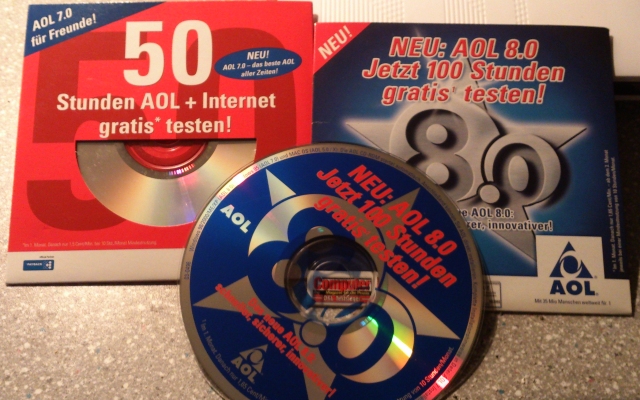
Nothing new. After three seconds there's nothing we've not seen before. But it is pretty. 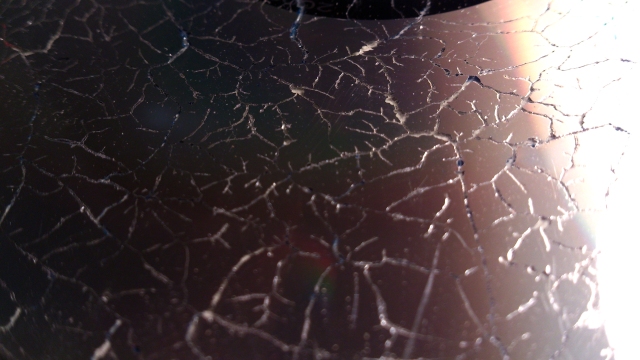
After 30 seconds, however, we did see something else -- a strange growth of some sorts. 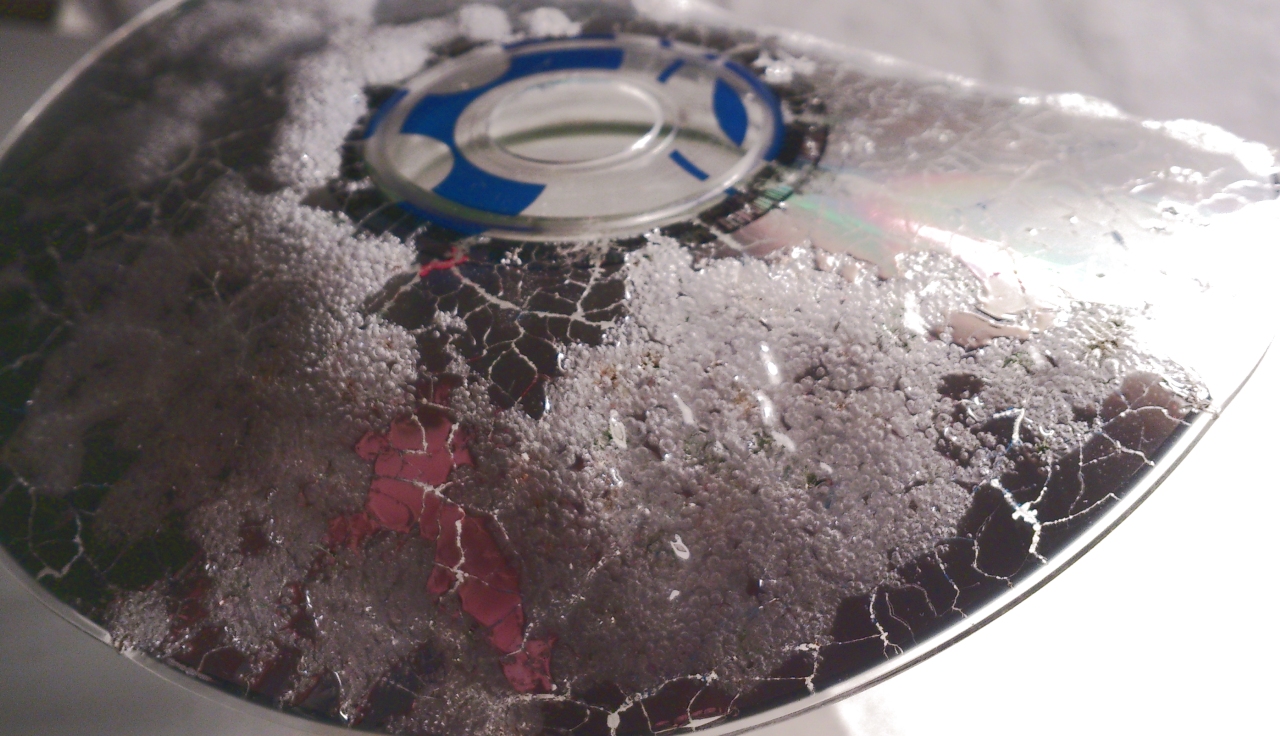
The MICROMAT had probably been contaminated since the last experiments. Or should we have worn gloves when handling the AOL 8.0 discs? It appears that the microwaves accelerated the growth of some alien fungal culture that was transferred from the grime on my fingers. Can the results be reproduced? 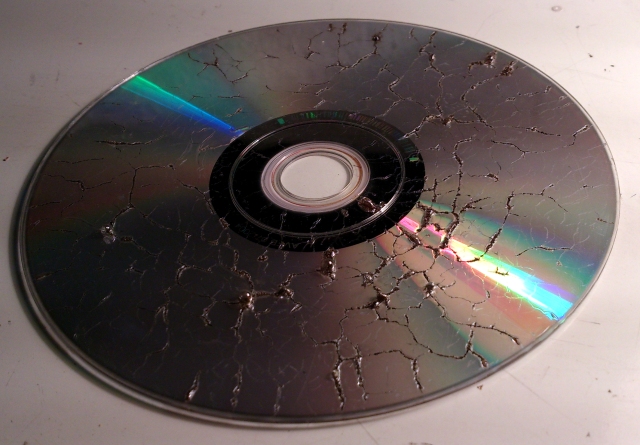
Indeed! After about five seconds, the other AOL disc began to cultivate a series of blisters. 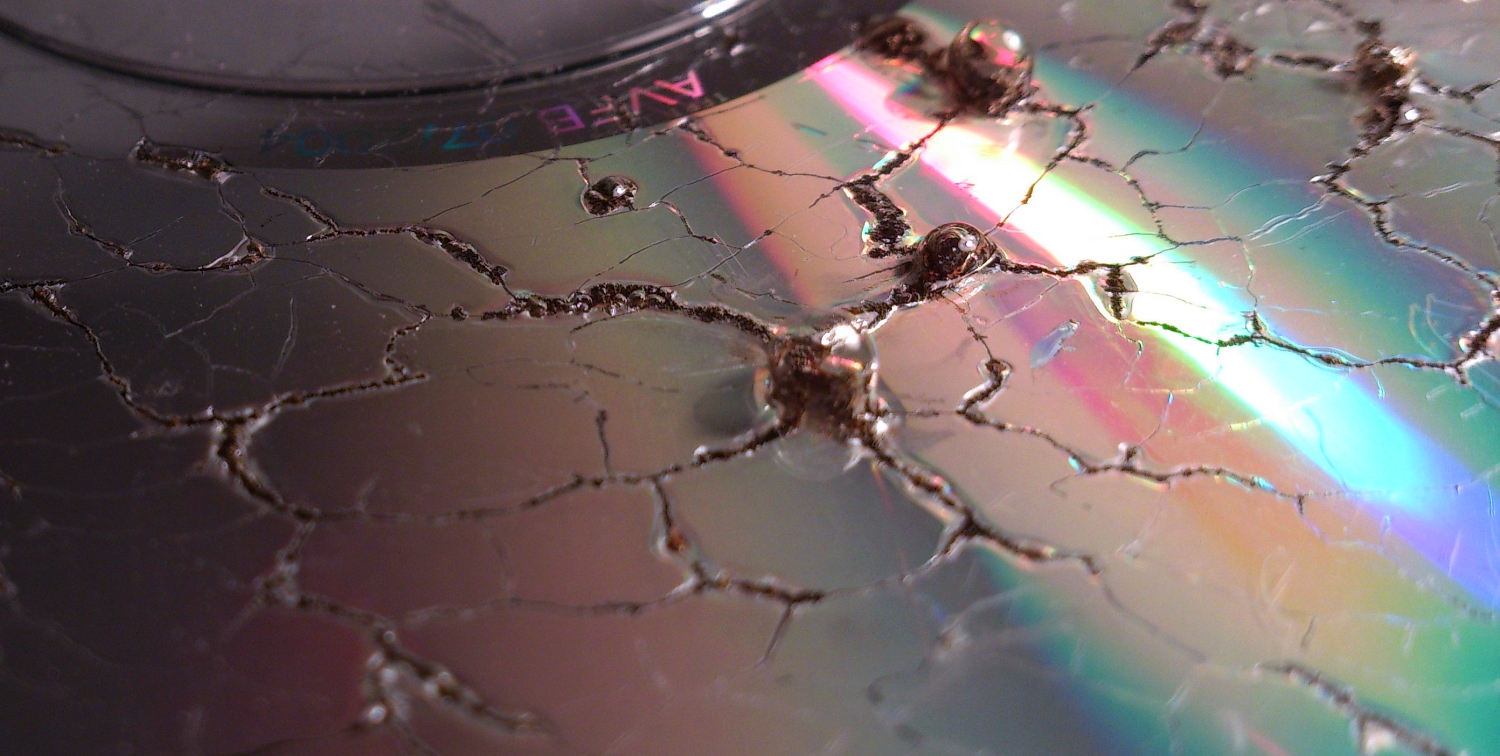
A closer look reveals that the MICROMAT hydrogen particle vibrator device acted as catalyst in the formation of alien bubbles hidden deep within the pits of an AOL 7.0 CD-ROM. More minutes in the MICROMAT would surely have birthed facehuggers! One wonders what kind of viral infection one could've picked up from more genetically-advanced AOL discs? 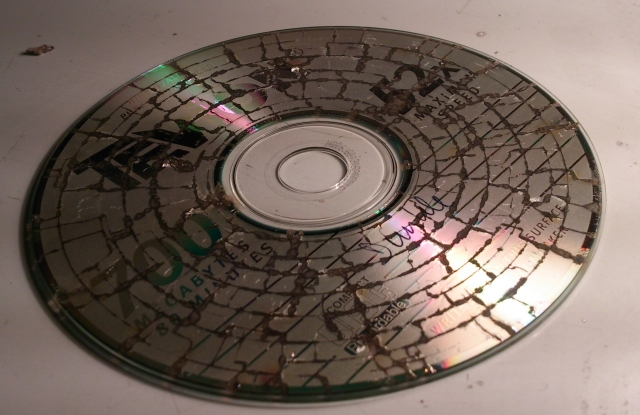
This Tevion CD-R, however, produced a differently familiar pattern entirely. Without aliens. 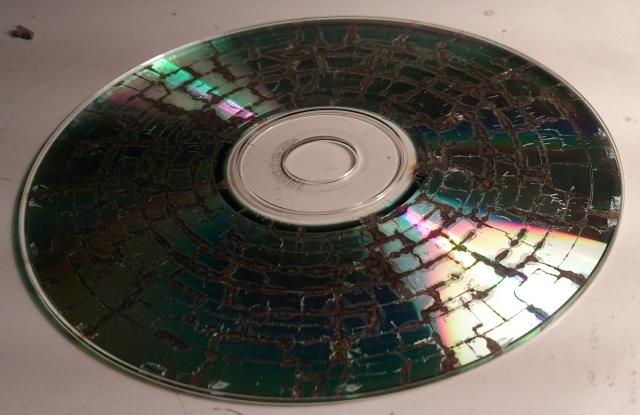
New in this round of experiments was a DVD-R: Results were entirely uninteresting and similar to a CD-R although it is worth noting that the affixed adhesive paper label did not catch fire. 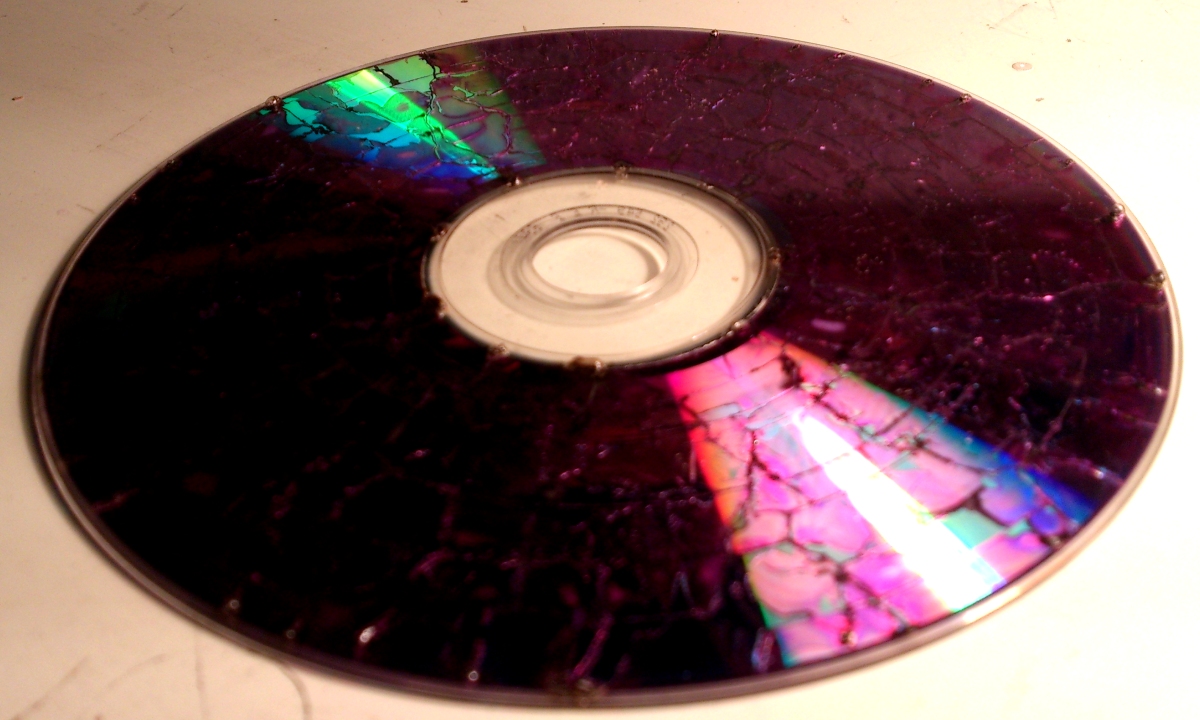
What did catch fire, though, was a standard floppy disk. The metal shutter caused a few good sparks as it focused the heat onto the plastic and magnetic media underneath it. This stank so much I couldn't even take a decent picture... 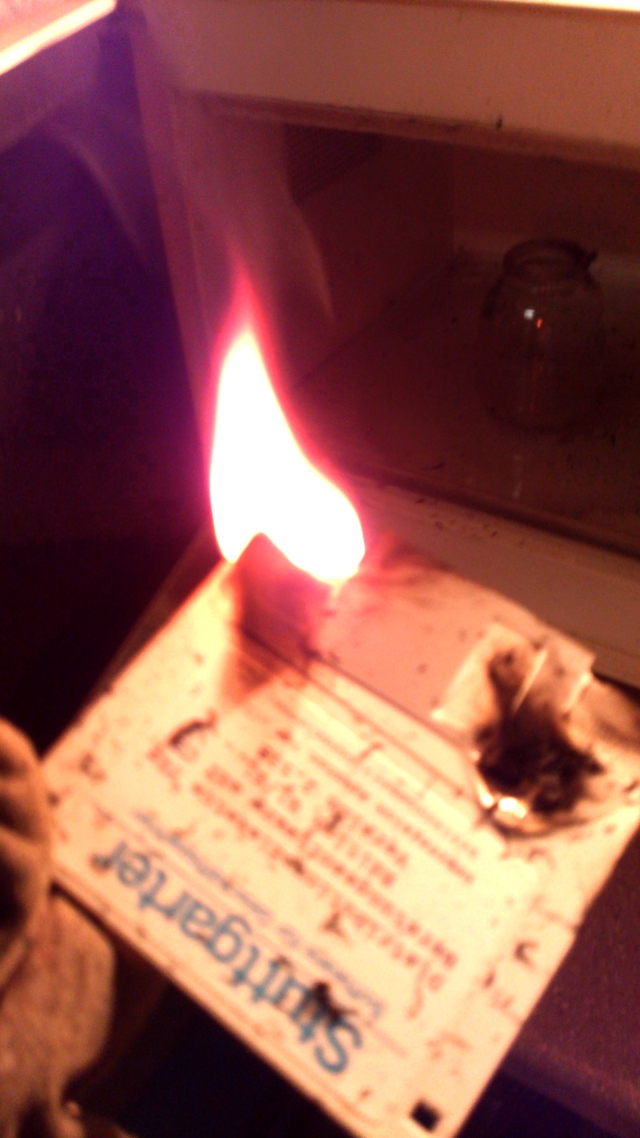
Well, children, that was exciting, wasn't it? No, not really. Let's see what happens if we shove a Vodafone EasyBox (DSL modem/router) into the MICROMAT. 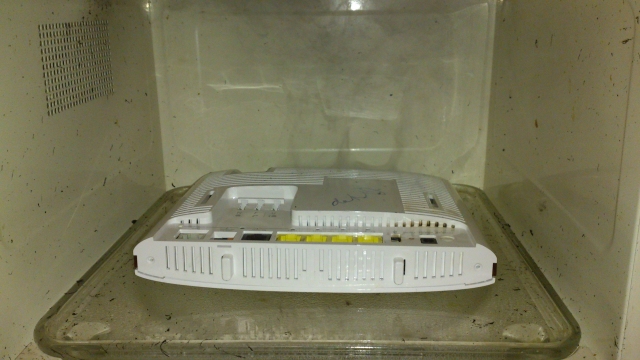
It smokes. It stinks. It takes a good few minutes before we're able to observe any sort of reaction. As would be expected, the plastic near the exposed metal contacts caught fire first, and gradually the rest of the plastic casing began deforming. Capacitors soon exploded like popcorn. The smoke became unbearable. That wasn't much fun either. 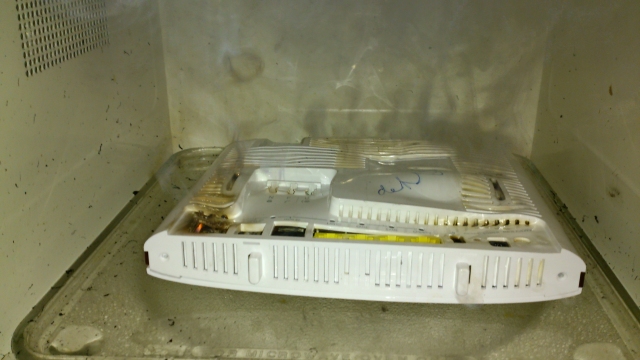
Once the smoke cleared, all that was left was a deformed blob of plastic. 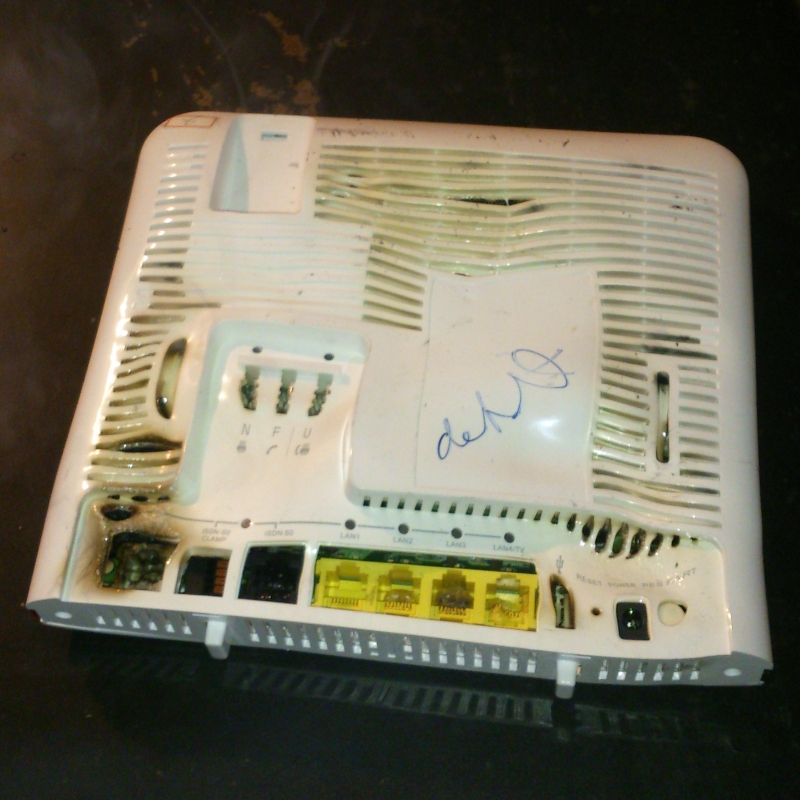

Boring. Clearly not a spectator sport. Worth noting is that the stink was terrible! 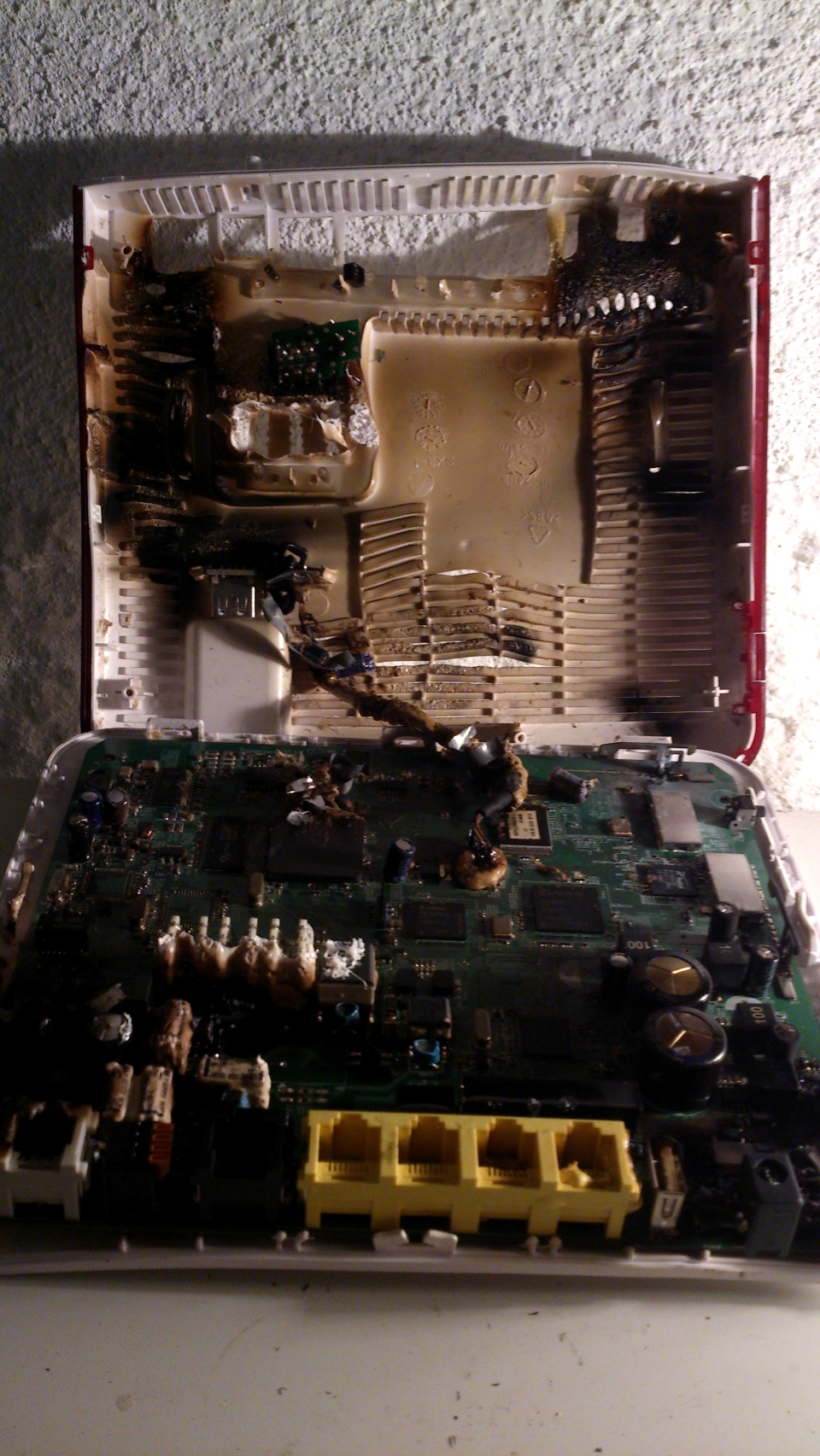
And for the main event? A laptop! Let's nuke a laptop! Let's stick this AST Ascentia 900N laptop into the MICROMAT! 
After five minutes at full 500W power? Nothing. It's clearly made with better plastic. Eventually some flames formed around the metal parts of the hinges, and the resulting heat began to burn and deform the plastic in that vicinity but no, not even popping capacitors, no other explosions or excitement. It did stink like hell, though. Rather disappointing results, in fact. 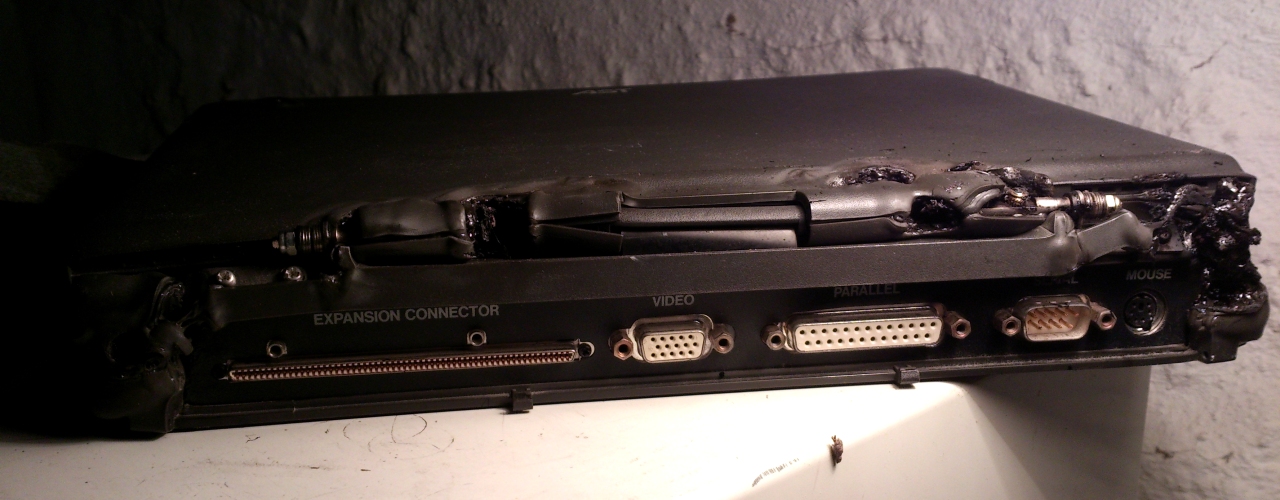
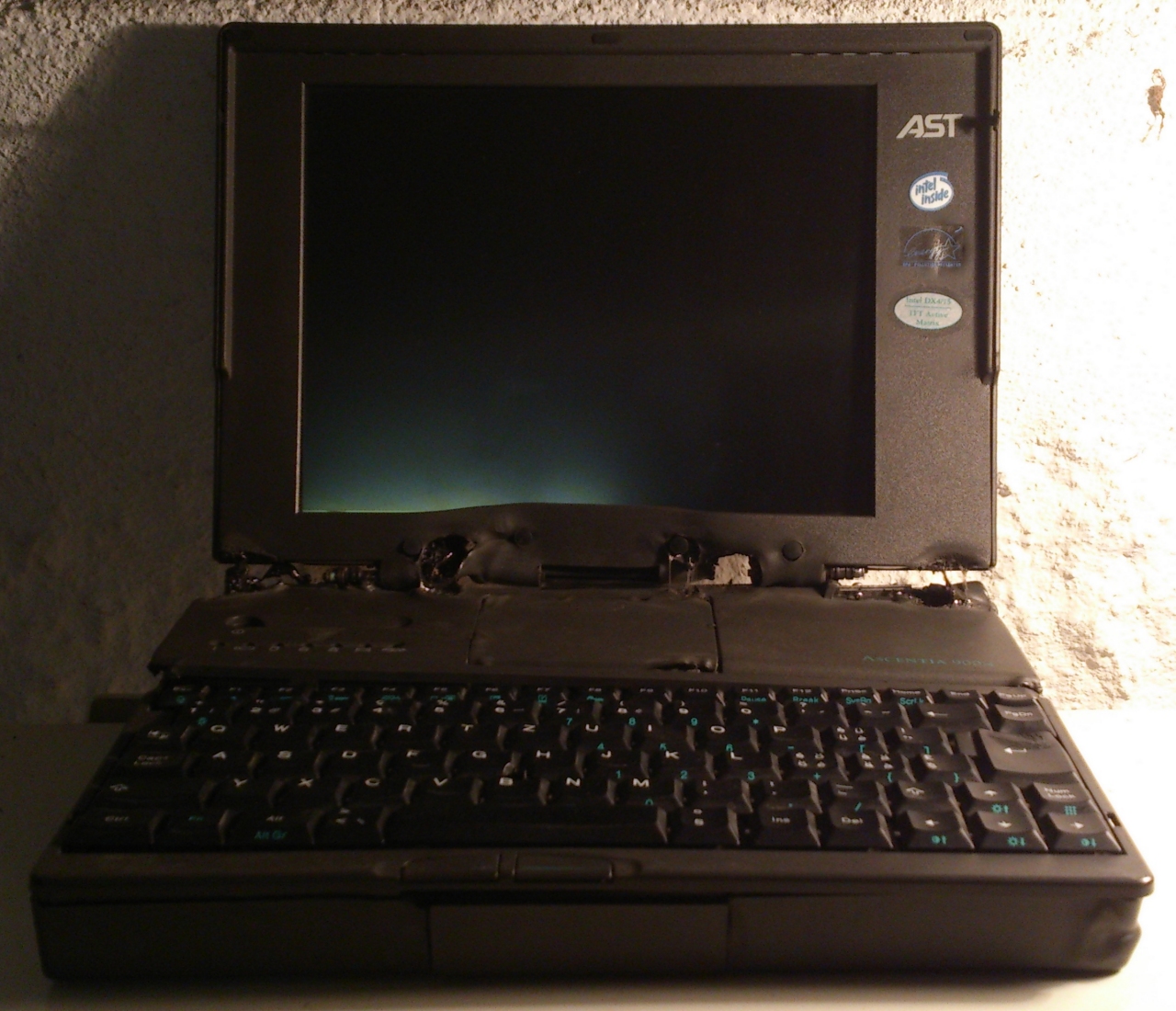
Most intriguing is the observation that the LCD stayed intact -- no damage visible but sorry, no comment on function or appearance when powered up. And yes, I did remove the battery before the experiment. I might be insane but I'm not stupid. Someday I'm gonna need a bigger microwave. This one's getting thrown out. |